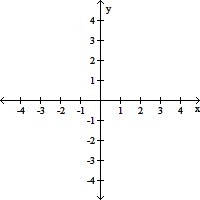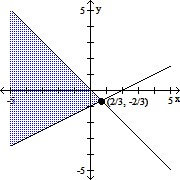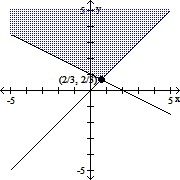Solve the problem.Suppose that a demand function is given by  where q is the demand for a product and p is the price per unit in dollars. Find the rate of change in the demand for the product per unit change in price.
where q is the demand for a product and p is the price per unit in dollars. Find the rate of change in the demand for the product per unit change in price.
A.  =
= 
B.  =
= 
C.  =
= 
D.  =
= 
Answer: C
You might also like to view...
Solve the problem.A large city is planning to upgrade its existing downtown water distribution system. Water will be fed into the area at the point represented by the vertex labeled A in the graph below. Water must be piped to each of 5 main distribution points, represented by the vertices B through F in the graph. City engineers have estimated the cost of laying the pipes to carry the water between each pair of points in millions of dollars, as indicated on the graph. They must now select which pipes should be laid, so that there is exactly one route for the water to be pumped from A to any one of the five distribution points (possibly via another distribution point), and they want to achieve this at minimum cost. Use Kruskal's algorithm to determine which pipes they should lay. Find
the total cost of laying the pipes you select.
What will be an ideal response?
Solve the problem.Two forces of 502 N and 246 N act at a point. The resultant force is 580 N. Find the angle, to the nearest tenth of a degree, between the forces.
A. 164.3° B. 85.3° C. 84.5° D. 95.5°
Graph the system of inequalities, and find the coordinates of the vertices.x + 2y ? 2 x - y ? 0
A. 
B. 
C. 
D. 
Solve and check your answer. - x = -4
- x = -4
A. - 8 B. 8 C. 4 D. - 4